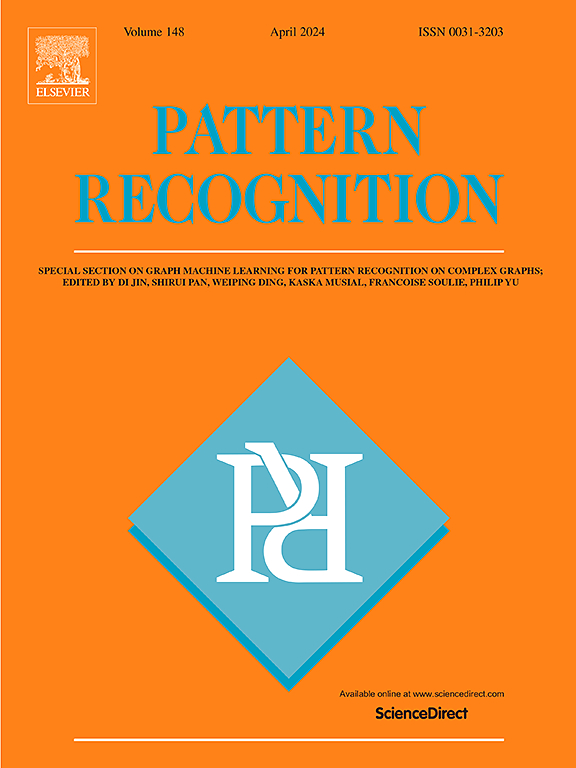An end-to-end shadow removal framework with an intuitive interaction scheme
IF 7.5
1区 计算机科学
Q1 COMPUTER SCIENCE, ARTIFICIAL INTELLIGENCE
引用次数: 0
Abstract
Shadow removal plays a crucial role in enhancing image quality by restoring the color and texture details of the shadow regions, thereby improving the performance of downstream visual tasks. Although recent shadow removal algorithms have achieved impressive results on benchmark datasets, shadows in such datasets are typically centralized and captured in relatively straightforward scenes. In contrast, real-world shadows tend to exhibit complex and irregular patterns due to the random distribution of objects, causing global processing methods to produce false positives and missed corrections. To address these challenges, this paper presents an end-to-end shadow removal framework leveraging Human-Computer Interaction (HCI), allowing simple bounding boxes to annotate targeted shadows. Our approach employs a novel chunked processing training strategy, which decomposes global shadow removal into iterative local refinements. Additionally, a Split-Channel module and an Edge-Weighted loss are incorporated to maintain consistent color and smooth edge transitions during restoration. Furthermore, an HSI-based shadow detection algorithm is proposed to generate shadow masks, facilitating end-to-end shadow removal. Experimental results demonstrate that our approach outperforms state-of-the-art methods on ISTD and SRD datasets, and exhibits robust performance on real-world images, effectively reducing restoration errors.
一个端到端的阴影去除框架,具有直观的交互方案
阴影去除通过恢复阴影区域的颜色和纹理细节,从而提高下游视觉任务的性能,在提高图像质量方面起着至关重要的作用。尽管最近的阴影去除算法在基准数据集上取得了令人印象深刻的结果,但这些数据集中的阴影通常是集中的,并且在相对简单的场景中被捕获。相比之下,由于物体的随机分布,现实世界的阴影往往表现出复杂和不规则的模式,导致全局处理方法产生误报和错过校正。为了解决这些挑战,本文提出了一个利用人机交互(HCI)的端到端阴影去除框架,允许简单的边界框注释目标阴影。我们的方法采用了一种新颖的分块处理训练策略,将全局阴影去除分解为迭代的局部细化。此外,一个分裂通道模块和边缘加权损失被纳入,以保持一致的颜色和平滑的边缘过渡期间恢复。在此基础上,提出了一种基于hsi的阴影检测算法,生成阴影蒙版,实现端到端的阴影去除。实验结果表明,我们的方法在ISTD和SRD数据集上优于最先进的方法,并且在真实图像上表现出稳健的性能,有效地减少了恢复误差。
本文章由计算机程序翻译,如有差异,请以英文原文为准。
求助全文
约1分钟内获得全文
求助全文
来源期刊

Pattern Recognition
工程技术-工程:电子与电气
CiteScore
14.40
自引率
16.20%
发文量
683
审稿时长
5.6 months
期刊介绍:
The field of Pattern Recognition is both mature and rapidly evolving, playing a crucial role in various related fields such as computer vision, image processing, text analysis, and neural networks. It closely intersects with machine learning and is being applied in emerging areas like biometrics, bioinformatics, multimedia data analysis, and data science. The journal Pattern Recognition, established half a century ago during the early days of computer science, has since grown significantly in scope and influence.
 求助内容:
求助内容: 应助结果提醒方式:
应助结果提醒方式:


